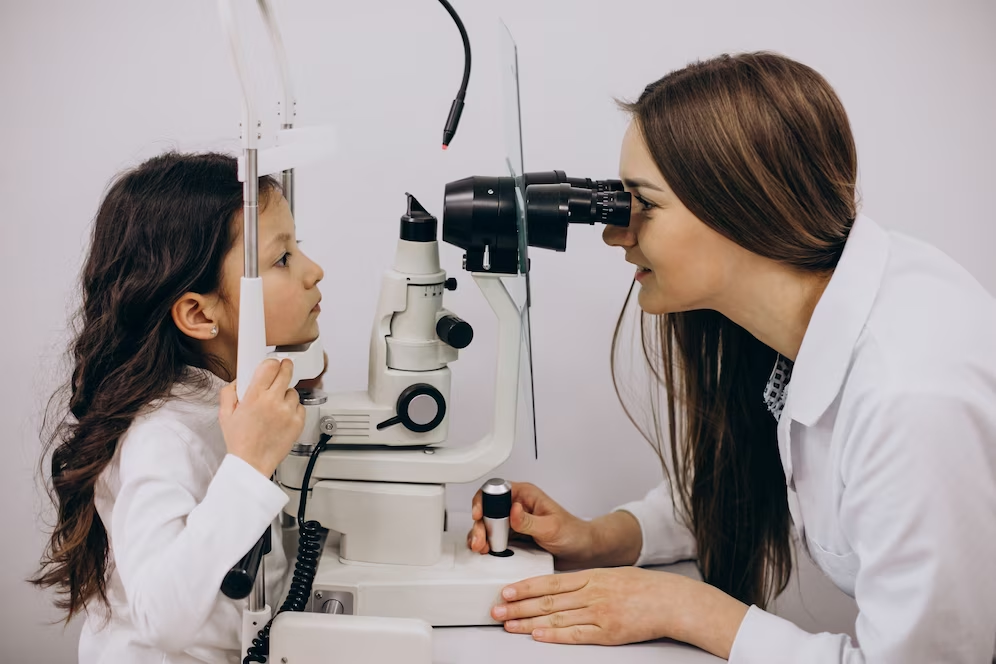

By Haley Holmes
Jun 15, 2023
Ophthalmology practices across the country are struggling with the ever-increasing burden of documentation required by electronic health records, declining reimbursements, tighter Medicare scrutiny and increased patient demand. This can make it difficult for ophthalmologists to continue providing high-quality care or even stay in business. Adding a key member to your care team can provide the vital support your practice needs to stay afloat and deliver exceptional patient care efficiently. That key member is none other than an ophthalmic medical scribe. Yes, a scribe is a valuable addition to any ophthalmology practice to improve the overall efficiency and quality of patient care.
How do ophthalmic scribes help?
Dr. James H. Antoszyk an ophthalmologist in Charlotte, North Carolina says that there is an increasing need for ophthalmic scribes. The increase in the demand for injection therapies that is turning retinal into a "pharmacotherapeutic and office-based" specialty makes creating a scribe-based practice an urgent necessity. He further added that scribes served as a potential tool to enhance physician efficiency and maintain a steady flow of income in an ever-changing regulated healthcare environment. He also stated that gross revenue from ophthalmic practices increased but so did overhead costs. This meant that net revenue was steady or slightly decreased. Ophthalmologists were working harder. But it was an unfortunate reality that reimbursements were going down. Patients wanted to finish their visits in a timely fashion. For that reason ophthalmologists needed to work with increased efficiency and taking the help of scribes seemed to be a perfect solution.
The following are some of the key considerations that will continue to accelerate the need for scribes in ophthalmic practices.
1. The number of patients receiving intravitreal injections has increased
Did you know that age-related macular degeneration is the primary cause of irreversible vision loss in people over age 50? This sight-threatening disease is expected to rise by 20% from 195.6 million in 2020 to 243.3 million by 2030 as a result of the aging worldwide population. Since there will be a need for clinical evaluation and treatment of each eye in AMD every 4 to 6 weeks, patients may have to visit the doctor’s office multiple times in a year, instead of just three or four times that were customary before the introduction of intravitreal injections.
2. Decline in practice revenue
Pravin U. Dugel, MD, a vitreoretinal disease specialist in Phoenix, Arizona conducted a systematic retrospective analysis of the accounting system of a multi-city, multi-physician retinal practice to gather data on revenues, expenses, and profit. This activity based costing analysis showed that increased office visits, OCT and non-OCT had a significant decline in the financial health of the retinal practice. With the increased usage of anti-VEGF injections, retina practices across the nation have discovered ways to fit in more patient visits, medical retinal services and medical imaging. But unfortunately they had to face a huge rise in operational costs. Despite huge revenue growth the overall result was a 14% decline in their profit margins.
3. Inevitable rise in aging population
It has been predicted that by 2030 approximately 67 million Americans aged 65 or older will be receiving Medicare - a substantial increase of almost 27 million elderly recipients from 2010. This trend will continue to rise as the older population continues to grow at an unprecedented rate and dramatically increase the demand for services and care.
4. Increased prevalence of low vision and blindness
It is shocking to note that by 2050, the number of Americans with vision loss and impairment is predicted to double from 1.02 million in 2015 to 2.1 million. A similar increase has been anticipated for low vision as well.
5. Increase in incidence of diseases requiring office-based care
A study titled “The Prevalence of Age-related Macular Degeneration in the United States in 2019” reports that 19.83 million Americans had age-related macular degeneration in the year 2019. This is an increase of almost 2.75 times greater than the earlier estimates and a clear indication of an impending public health crisis. Another study says that by 2050, there will be three times as many Americans aged 40 or older with diabetic retinopathy and vision-threatening diabetic retinopathy. Quite alarming isn’t it. Similarly, the increase in diabetic retinopathy among those who are 65 and older will be more pronounced.
The upshot
Ophthalmic medical scribes free the ophthalmologists from the burden of charting patient encounters allowing them to focus on the patients and business itself. Well, scribes help ophthalmic practices stay afloat by retrieving patient data, recording patient assessments and care plans, coding visits, educating patients and assisting with procedures. This way they increase the number of patient visits by 25% to 100% and, most importantly allow ophthalmologists to spend more time with patients while adapting to the rapidly evolving trends in retina care.
If you are on the lookout for ophthalmic virtual scribes, Scribe4me has a pool of highly trained and certified ophthalmic scribes to provide the vital support needed to transform your retinal practice for the better. To learn more give us a call at (908)736-4180.

Please fill out this form.
We will reach out to you within 24 hours

Haley Holmes

Haley Holmes

Documentation is an important daily clinical responsibility. In order to optimize patient care, physicians are always on the lookout for new ways to effectively and efficiently document patient visits.
The use of virtual medical scribes has become increasingly popular in the recent years, as medical practices across the country are on the constant lookout for ways to reduce clinical documentation overload, thereby improving overall productivity.
The clerical burden associated with EHR usage is attributed as the number one cause of physician burnout. We also know that physicians spend twice as much time on EHRs and other clerical tasks compared to the time providing patient care.